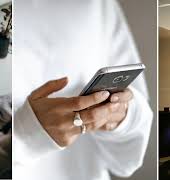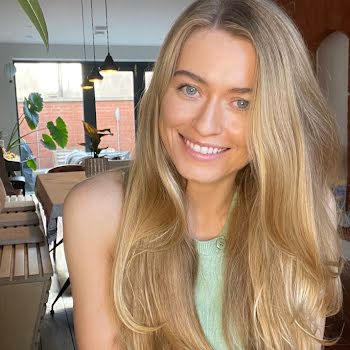
By Jennifer McShane
16th Sep 2020
16th Sep 2020
Twenty-five-year-old Clodagh Ní Maonaigh from Meath was diagnosed with coccydynia, an extremely painful condition of the tailbone, at just 14. She tells Jennifer McShane of the exhausting route trying to get medical care, having to leave school due to the illness and the isolation that comes from a condition not visible to anyone else, but one which consumes your every day.
It all started on Christmas Day 2008; an “odd sensation” which would only occur when Clodagh would go from a sitting to a standing position. “Standing up from the dinner table, I noticed a sharp pain in my tailbone. It was an odd sensation, something I had never felt before. The pain continued into the evening, occurring only when I would go from sitting down into a standing position.”
“I Googled my symptoms, and every search led me to the same word: coccydynia. Coccydynia is an inflammation of the tailbone. It can be caused by many different factors, including childbirth, a trauma, and referred pain,” she explains. “I had never heard of the condition, and neither had my mam who once worked in a pharmacy and was quite savvy when it came to medical stuff. I printed the Coccydynia Wikipedia page and took it to my local doctor.”
Uncommon illness
Coccydynia is an uncommon condition; it affects 1 in every 100 people and women are five times more likely to develop it due to the association with childbirth. As a result, it took Clodagh, who was only 14 at the time, longer than most to get diagnosed. Like many conditions which seem to suddenly present themselves, she at first hoped the pain would subside. When it didn’t school gradually became more difficult to cope with.
“As days, and eventually, weeks, went by, the pain never went away. When I returned to the hard, wooden chairs of the school classroom, I had a constant, dull pain in my tailbone. Unlike most pupils, I would dread the end of class. Not because I was enamoured by the learnings, but because I would have to stand up.”
“I was 15 and it was my Junior Cert year. I was missing a lot of school between pain and appointments with consultants for x-rays and scans. The diagnosis came and it was clear that my tailbone was inflamed.”
Sudden as her symptoms were, Clodagh said that no one could detect the exact cause of the condition. “For me, the cause of coccydynia is unknown. It’s likely I injured my coccyx during a fall as a child.”
As a fourteen-year-old who loved to learn, she was eventually homeschooled to deal with the pain but says it wasn’t the dream situation most of her peers thought it to be. As well as that, other conditions began to present themselves, making day-to-day comfort in school an impossibility.
“Navigating life as a teenager is hard, but not being able to sit down made things a lot harder. The fact I couldn’t properly sit down meant I would always sit over on one side, which led to more complications. Sciatica, scoliosis, and knotted muscles in my back soon appeared,” she continued. “The pain became too much for me, and eventually, I left school. My mam organised home school and tutors, which were funded by the Department of Education because it wasn’t just a condition — it was a disability.”
“I was never particularly fond of school itself, but I loved learning. My peers thought I was living the dream being homeschooled, but I was actually struggling a lot more than I thought I would.”
“I simply couldn’t sit down anymore – the pain became too much for me to bear”
“I was supported by five hours a week of tutoring, which is only one-fifth of the time my classmates in school had with a teacher. At this point, I simply couldn’t sit down anymore — the pain became too much for me to bear. I had to lie on my side as tutors came to teach me in the lead-up to my Junior Cert exams.”
“A year went by, and I had become extremely depressed. I felt like I had no future in sight, I’d never go to college or get a job. In the run-up to my Leaving Cert, my tutorial hours were doubled to ten a week. Still not enough time to prepare me for my exams.”
The strain took its toll on Clodagh who says pain management avenues had been exhausted and she had little support from many doctors. “I was lonely, frustrated, and angry. I began to self-harm to cope with the anguish I was going through. Aside from painkillers, there wasn’t much more I could do for pain management. I tried coccyx cushions, physiotherapy and cortisone injections.”

“Learn to live with it”
“Once we had exhausted all pain management avenues, a consultant told me I would have to “learn to live with it”. Teachers were cruel, friends were crueller. I was 17 at this stage, and I was completely devastated. I cried my eyes out in their office that day, and they didn’t really care. They told me the only other root would be to give me a prosthetic coccyx or remove it completely, but given my age, this wasn’t an appropriate option.”
Despite the stress and difficulty of the illness, she says she wanted to try going back to school, to try and curb her feelings of loneliness. Sadly, she said she felt like an outsider and got little understanding from formerly close friends — and even teachers.
“I decided I wanted to go back for one class a week: biology. I knew I could stand at the back of the class, and lean against the high tables in the laboratory. It would mean I got out of the house twice a week, and I would be able to see my friends in school like any other teenager. It didn’t last long.”
“I was met with stares from classmates who were previously close friends, wondering what I was doing back. I was somewhat of an anomaly; rumours floating around I was kicked out of school, others picking fun at my inability to sit down. I mean, there are people who can’t stand up, what was so hard to believe about someone who couldn’t sit down?”
“The Biology teacher singled me out at every opportunity she could. If I had a visible disability would she have gotten away with it? Probably not. I just wanted to blend in at the back of the class, do my bit of work and go home. I was hurt and embarrassed and told my Mam what was happening, she soon allowed me to take that class from home again.”

“I was still scheduled to take the exams at my school, as I was a registered student there. My exams were taken in a separate classroom from the exam hall where I could stretch out and lie on the floor or kneel at a desk. No one spoke to me, people just stared.”
However, Clodagh defied expectations, getting results she says no one expected her to get.
“I did well in my Leaving Cert in the end: an A, four Bs and a C. I had defied everyone’s expectations of me, even my own. I kept a few close friends through the school year. They stood up with me when we would meet up for lunch, and didn’t care that I would sit halfway off a chair at any event.”
“I was a teenager, all I wanted was to fit in, not stand out”
Clodagh is keen to emphasise the isolation that comes with a condition which is invisible to the naked eye. “When the Debs came around, my school didn’t invite me, and that really hurt. I felt ostracised and forgotten. Just because I had a disabling condition didn’t mean I should have been excluded from the Debs.”
“People with chronic illnesses need more support”
“Having an invisible illness means that people don’t necessarily believe you when you tell them you have a disability. I don’t look disabled, and I don’t feel part of the disabled community. There are online networks, which is great, but people with chronic illnesses in Ireland need more than that,” Clodagh continued.
“We need government support and recognition. There are only very few chronic illnesses classed as a disability in Ireland. Fibromyalgia, which would be more known than coccydynia, isn’t classified, so what hope does my illness have? I have never met anyone with the condition, but one day I hope to.”
“I would like to see more support given to young people with invisible illnesses by the school system. School tends to be the centre of a teenager’s world, so why shouldn’t everyone be understood and given the same allowances?”
Still, she says, until there is more awareness, she won’t get the support she deserves from the medical community.
“At the moment, I am not undergoing treatment. I really am used to the pain, but that doesn’t make it easier. I still hope for a day where there’s just something else that can be done. I have the condition 10 years now, and I soon hope to have my illness re-evaluated. The only support I have for my pain is over-the-counter pain medication, heat patches, Epsom salts and hot water bottles. The muscles that are meant to support the rest of my back are doing overtime to make up for the coccydynia and scoliosis which are causing weaknesses. I pulled a muscle in January and I am still recovering from it. I told my doctor about it on my last visit and she refused me painkillers, telling me to ‘find a physiotherapist’, which I have.”
“I had to leave my last job because of the ongoing pain in my back. While the coccydynia hasn’t directly affected my life so seriously in a few years, it is partially to blame for this happening. I always just learned to deal with the pain. For now, I’m focusing on repairing my body and looking after my mental health. I keep busy by managing a collaborative blog, as well as writing.
She says she found some consolation in her college experience and realised that her path needn’t be a linear progression; she could do it her way.
“I was let down by the healthcare and education systems when I needed them to advocate for me. After my Leaving Cert, I started college in Ballyfermot studying media production. I absolutely loved it. My college experience was amazing, and while nothing could ever replace my teen years, I was delighted that it brought me out of my shell and taught me that there are lots of ways to get where you want to go in life. There is not one, linear path.”
You can visit Clodagh’s blog at www.empwr.ie
Photographs: Unsplash
Read more: Save a life: Irish Heart Foundation launches free CPR training programme
Read more: What is sophrology? How to relax in the 21st century
Read more: Highly effective alternative remedies for joint pain























